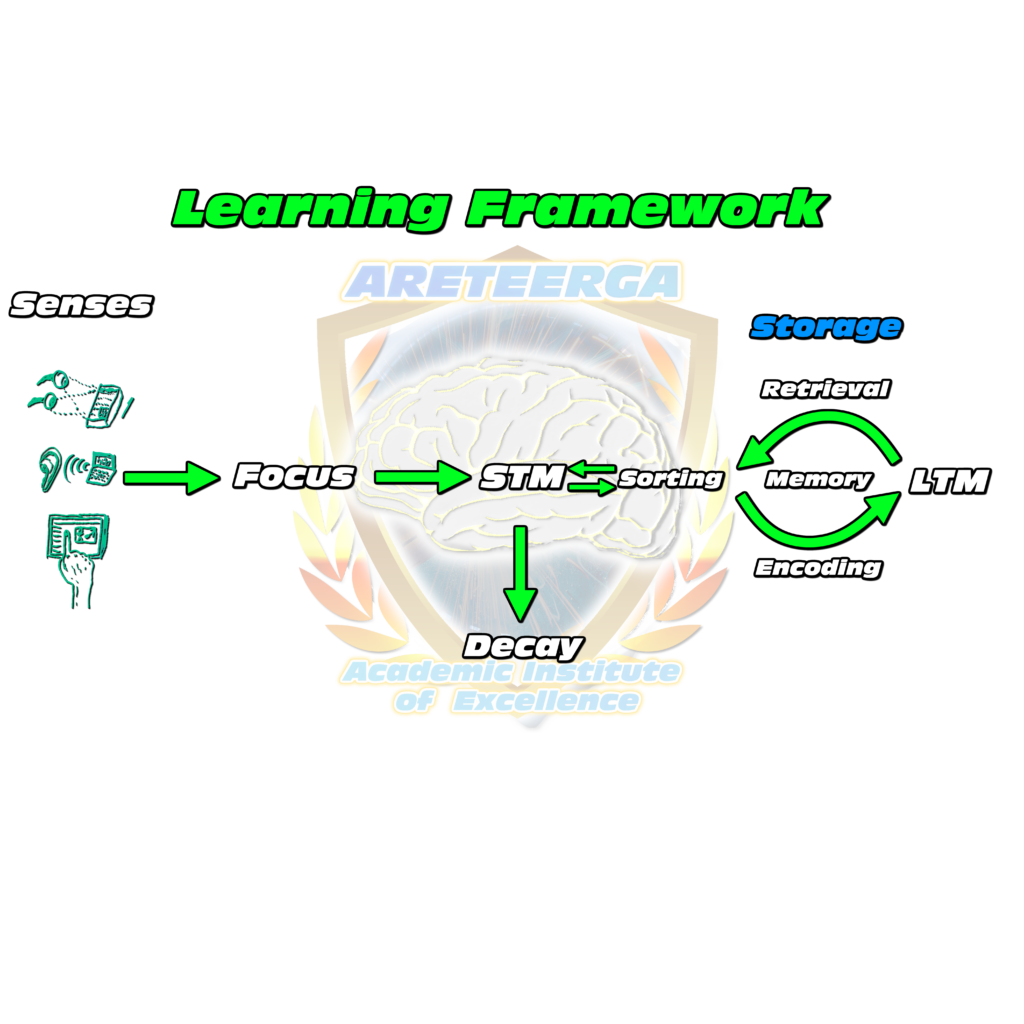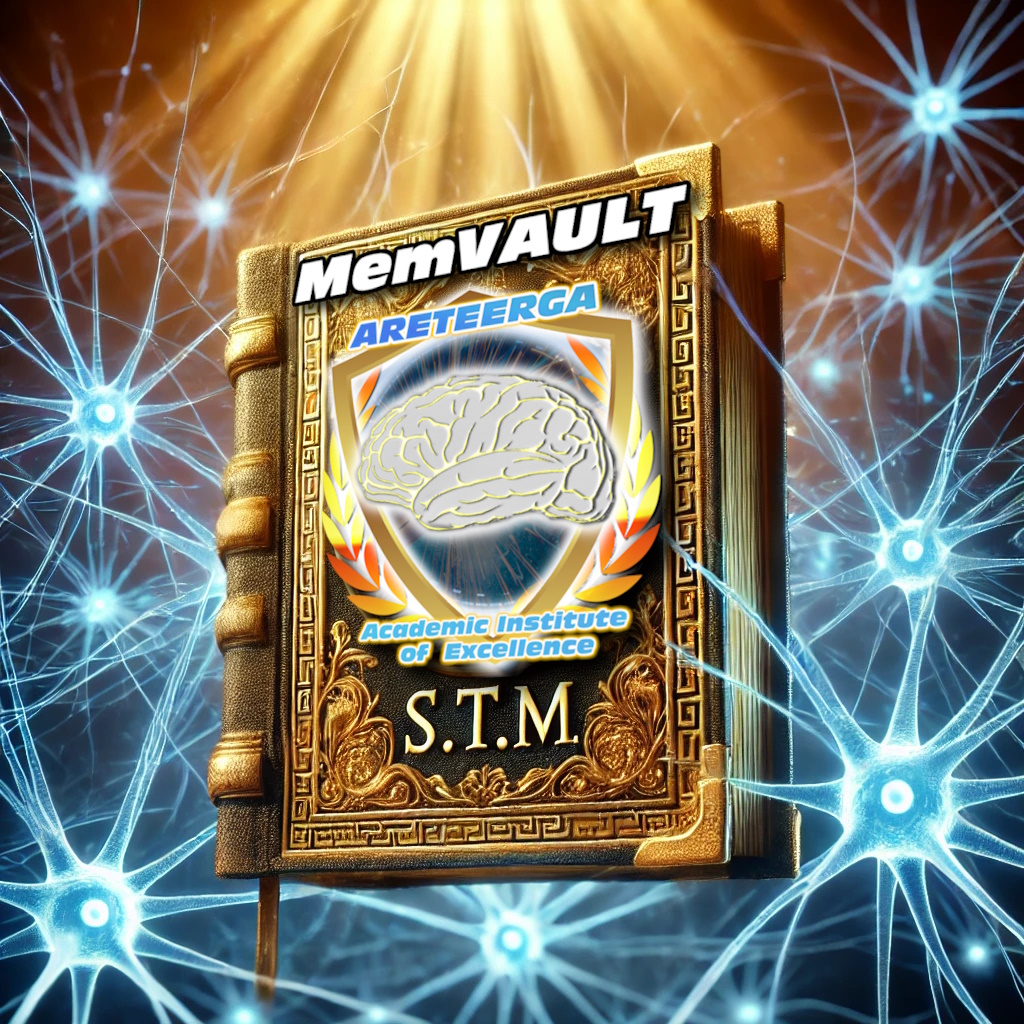– A Repository of All Study Strategies
MemVAULT requires special clearance to view and thus is restricted to Cognoscente Members.

Prelude: Inspiration for MemVAULT
Ancient philosophers placed immense value on memory as the cornerstone of knowledge, wisdom, and the pursuit of truth. Memory was not merely seen as a practical tool for retaining information, but also as a sacred link to the divine and eternal truths.
Plato, for instance, viewed memory as a key to anamnesis (remembrance), the recollection of knowledge the soul had known before birth. In this light, the Ancient Greek concept of Thesauros, meaning “treasury,” beautifully encapsulates how memory was perceived as a vast and precious repository of ideas, experiences, and truths. For philosophers, this “treasury of memory” was the wellspring of creativity and understanding, a vault from which humanity could draw its greatest intellectual treasures.
Inspired by this philosophy – I have created MemVAULT. MemVAULT is a database of every Study Strategy in existence – as well as containing a growing number of Study Strategies that I created.
Thus, MemVAULT is a precious treasury of knowledge that I curated with a singular goal in mind: to exponentially amplify a person’s ability to store memories.
As we journey through life – we gain experience and that experience builds us into the person we become. A major aspect of our being in the present moment is our memory – that is – a recollection of all the experiences – including those we can consciously retrieve and those that are stored at a subconscious level.
If memory is that important – surely there would be benefit in our lives if we could amplify our ability to encode and retrieve memories?
The Basics: Memory Processes
We perceive information through our senses – if we choose to focus on that information we transfer it into Short Term Memory (STM). Information in STM is exposed to harsh conditions – the signal strength is weak – the memory trace decays in the order of seconds – and there is a capacity limit (7+/- 2 Units). Yet, despite the built-in STM limitations, we manage to collect a vast repository of Long Term Memory (LTM).
STM can be sorted in a large variety of ways in preparation for LTM storage. The process of “attempting to store” memories is called Encoding. Once a memory trace is encoded into LTM it is (somewhat miraculously) stored for extended periods of time. Ask any Neuroscientist to pin-point exactly where human memories are stored in the neuron and they will be stunned silent.
Below is my Learning Framework – a simplified model of the normal memory process (there is an expanded version also but it’s not available online!).

We know the seahorse-shaped Hippocampus in the Temporal Lobe is critical for memory formation. We know that neural synaptic connections and the release of neurotransmitters play a critical part in Long Term Potentiation (LTP), and that the end product of all of the cellular signalling activity is Long Term Retention of a memory.
This process includes but is not limited to (Full Science Mode):
Synaptophysin
- A membrane protein associated with synaptic vesicles, involved in vesicle trafficking and neurotransmitter release.
Neuroligin
- A postsynaptic adhesion protein that interacts with neurexins to establish and maintain synaptic connections critical for memory.
Gephyrin
- A postsynaptic scaffolding protein crucial for anchoring inhibitory neurotransmitter receptors at synaptic sites.
Arc (Activity-Regulated Cytoskeleton-Associated Protein)
- A protein that plays a key role in synaptic plasticity by regulating AMPA receptor trafficking and synaptic remodeling.
ProSAP/Shank Proteins
- Scaffolding proteins that stabilize synaptic structures and contribute to dendritic spine morphology and synaptic plasticity.
Homer
- A postsynaptic density protein involved in connecting group I metabotropic glutamate receptors (mGluRs) with intracellular signaling pathways, essential for synaptic plasticity.
Kibra
- A scaffold protein involved in synaptic plasticity and the regulation of memory-related structural changes in the brain.
PSD-95 (Postsynaptic Density Protein 95)
- A key scaffolding protein at excitatory synapses that organizes neurotransmitter receptors and other synaptic components, critical for synaptic strength.
CPEB (Cytoplasmic Polyadenylation Element Binding Protein)
- A regulator of mRNA translation at synapses, involved in local protein synthesis required for long-term synaptic changes and memory consolidation.
CaMKII (Calcium/Calmodulin-Dependent Protein Kinase II)
- A pivotal protein for synaptic plasticity, essential for LTP and memory consolidation. It acts as a molecular switch to strengthen synaptic connections.
CREB (cAMP Response Element-Binding Protein)
- A transcription factor that governs gene expression necessary for long-term memory formation and synaptic remodeling.
PKA (Protein Kinase A)
- A critical enzyme in the cAMP signaling pathway, essential for LTP induction and regulation of downstream memory-related genes.
BDNF (Brain-Derived Neurotrophic Factor)
- A neurotrophin essential for promoting synaptic growth, survival, and plasticity, directly impacting memory formation.
ERK (Extracellular Signal-Regulated Kinase)
- A key player in the MAPK pathway, involved in synaptic remodeling and the regulation of memory-related gene expression.
PSD-95 (Postsynaptic Density Protein 95)
- A scaffolding protein that organizes glutamate receptors and signaling complexes critical for maintaining synaptic plasticity.
Synaptotagmin
- A calcium sensor critical for neurotransmitter release and synaptic vesicle recycling, essential for effective synaptic transmission during memory encoding.
SRF (Serum Response Factor)
- Regulates activity-dependent transcription of immediate early genes and synaptic plasticity.
NF-κB (Nuclear Factor kappa-light-chain-enhancer of activated B cells)
- Involved in synaptic signaling, plasticity, and the expression of genes required for memory consolidation.
Fos (part of the AP-1 complex)
- An immediate early gene that regulates downstream gene expression necessary for activity-driven synaptic plasticity and memory.
Jun (part of the AP-1 complex)
- Works in conjunction with Fos to form the AP-1 complex, controlling genes involved in synaptic plasticity and memory storage.
REST (RE1-Silencing Transcription Factor)
- Modulates gene expression linked to synaptic activity and neuronal excitability, influencing memory and learning processes.
etc.
So… Where Are Memories Stored?
And yet, we do not know where memories are actually stored. Maybe it’s a neural network that retains memory in the connections (but surely that would require constant activity to retain the memory), or maybe it’s stored in the cellular machinery (but what if the proteins degrade?), or maybe it’s stored at the synapse (but then surely synapses would get crowed with memories that use the same synapse), or maybe they are stored in a quantum state beyond our ability to measure (which sounds like magic), or maybe it’s stored in our DNA sequence – somewhere between the Exons (regions of DNA that code for proteins). Where ever it is stored, we understand the processes that build-up memory really well. There is also a wealth of research exploring all of the possible processes that can impact the formation and retrieval of memory.
What Is MemVAULT?
MemVAULT comes into play at every step of the memory formation process.
There are Study Strategies that can improve your Encoding, Storage and Retrieval of memories. What I am the first to do – is to organize these Study Strategies – of which there are over 150 strategies – into a categorized archive.
In the same way that Dmitri Mendeleev organized the atoms into the early periodic table, or how Carl Linnaeus organized the naming of animals into a binomial nomenclature – I have organized the Study Strategies into categories according to primary function, main point of intervention in the memory process, effectivity and difficulty to implement.
The collection of which is:
MemVAULT:

MemVAULT requires special clearance to view and thus is restricted to Cognoscente Members.

